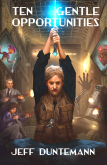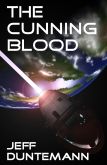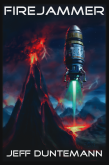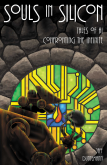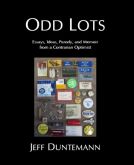- It would be a little embarrassing to the US if Britain beat us to the Pan Am Clipper, but by God, I would stand with Arthur C. Clarke and the Queen and cheer if they do.
- Satire is the soul of civilization: A Colorado town wants to issue drone-hunting permits. All methods allowed…and no bag limits!
- In 1890, England had Eiffel Tower envy. So…let’s have a contest! The winner was never finished, and was dynamited and sold for scrap in 1904.
- Sorry, guys. You learn how to be a writer by…writing. And reading. And thinking critically about your own writing…along with everything else in the universe. Worked for me.
- I drank wine out of a Dixie cup once, and I didn’t explode or turn green. However, if you want to learn to be imbibably correct, here’s a good place to start.
- That said, canned wine seems to be making a comeback. One of the first wines I ever drank as a legal adult (summer 1973) was white zinfandel…out of a can. No wonder I didn’t drink wine again for another ten years.
- Speaking of wine: Wine 1.6 has been released.
- The pitch drop has fallen.
- And given that I fell in love with her a week before I met her, I have now loved Carol for 44 years.
science
Odd Lots
Odd Lots
- The length of the Earth’s day varies more than I would guess, and the cause seems to be a certain amount of slosh in our molten core.
- PC World is shutting down its print edition. I still have early copies of both PC World and PC Magazine in boxes, including issues from those heady days when the PC universe was exploding like a supernova and the magazines could be an inch thick and heavier than some small dogs. If I could still make money in magazines I’d still be in magazines making money, but that train has left the station, the station has been razed, and the tracks sold for scrap.
- I smell careers burning.
- Which might be one reason the Chicago Tribune’s owners are doing this.
- And yet another reason (among many) for this.
- On a whim I went out and checked the Adobe CS2 download link that got so much attention this past January. Gone. I guess they calculated that anybody who was entitled to it already had it, and all the rest were pirates. I wonder if they understood that genii don’t return to their bottles once let loose.
- How about some extreme swimming pools? Damn. I’d just like to have a really boring swimming pool right now.
- Or maybe nine peculiar (old) vending machines. Read the comments, which contain more cool vending machine links. I saw beer vending machines on Japanese streets when I visited Tokyo in 1981. It shouldn’t be too long before a modern descendant of the Book-O-Matic actually prints and binds your book from scratch, while you watch. Alas, it will cost more than a quarter.
- Speaking of descendants: I knew this. Did you?
- Bill Higgins sent a link to some sort of German WWII tank training manual, written in German rhyme and illustrated in a very surreal fashion, including God carrying a tank on one shoulder and a chubby redheaded Aryan angel in leather boots, holding a cannon rammer. The Jaegermeister stag-and-cross is there too, which might explain a few things. Yet another reason I should have taken German in high school.
- Speaking of Jaegermeister: I asked my nephew Matt what it tastes like. His answer: “You don’t want to know.” When pressed, he added, “Malort.” Only a little research confirmed that, yes, I really don’t want to know.
- Choice is always good.
UPDATE: A little research on the Panther Primer shows that the figure I thought was God is St. Christopher; the angel in red braids is St. Barbara, and the guy chasing the buzzard is St. Hubert, who was a master hunter…a Jaegermeister. Siegfried is in there too, as are some Classical Greek figures. German tank crews must have been a pretty educated bunch.
Odd Lots
- Ars has the best article I’ve yet seen on the recent ruling in the Apple ebook price fixing trial. Insight: Publishers get less under agency than they do under wholesale, but they’re willing to accept it to keep control of pricing. Book publishing is a freaky business. This may not work out as planned for the publishers.
- Also from Ars: Weird search terms that brought readers to the Ars site. I used to publish these too, but I don’t get as many as I once did. Web search has always been a freaky business. I guess the freakiness just wanders around.
- The sunspot cycle still struggles. Cycle 24 will be freaky, and weak–even with our modern tendency to count spots that could not be detected a hundred years ago.
- Not news, but still freaky if you think about it: The Air Force tried building a flying saucer in 1956. The aliens are still laughing at us.
- Actually, the best flying saucers are all triangles. In the greater UFO freakshow, these are by far my favorites.
- There’s a quirk in the insurance industry that will allow young people to opt out of the ACA and still get health insurance–while paying much less they would buying traditional health policies under ACA. Life insurance policies often allow for accelerated payouts of benefits while the insured is still alive. My insight: Such a policy would be a way to finesse limited enrollment windows by paying for catastrophic care until enrollment opens again. (Which would be no more than ten months max.) And you thought publishing was a freaky business.
- We thought we knew how muscles work. We were wrong. Human biology is always freakier than we thought.
- As is washing your hair–in space.
- Streaming is the ultimate end of the DRM debate. Music, movies, sure. Could one stream an ebook? Of course. Would people accept such a system, or would they freak out? Well, we thought DRM for serial content was dead, too. (Book publishers have become much more aggressive against piracy lately. More tomorrow.)
- And finally, if you want freaky, consider the humble cicada killer, which vomits on its own head to keep from frying in the summer. We had them living under our driveway in Baltimore. I didn’t know what they were and they scared us a little until I called the county ag agent, who said, “They’re cicada killers, but don’t worry. They’re harmless.” I immediately called Carol at work to give her the good news. The receptionist at the clinic wrote down: “Jeff called. The things living under your driveway are psychotic killers, but don’t worry. They’re harmless.”
Odd Lots
- Well. Amazon (finally) pulled my name off Garth Williams’ book Baby Farm Animals. Years of polite complaints didn’t do it. Making fun of them in the comments did. Thanks to my friends Eric, Steve, and Dave for working the magic. Poor Garth can rest in peace now without having to learn x86 assembly language.
- Erik Klemetti has a good overview of the 1783-84 Laki eruption in Iceland, which caused a sulfuric haze that Benjamin Franklin said reduced the intensity of the sunlight so much that a magnifying glass could not concentrate it sufficiently to ignite paper.
- Here’s a good if technical discussion about what’s wrong with X and why Wayland almost can’t help but be better.
- Yet another force pushing print magazines into the torn-off-cover return racks of history: People are checking Facebook on their smartphones while waiting their turn in supermarket checkout lines. Good-bye to starting a story in People and then tossing the mag in the cart to finish at home.
- I don’t always agree with Stallman. But this time I sure as hell do. (Thanks to Pete Albrecht for the link.)
- Bruce Eckel pokes holes in a couple of recent SF films. I hate to think of what he might have said about Independence Day. (Thanks to Jason Bucata for the link.)
- I’m not sure that Beowulfing boxfuls of Raspberry Pi boards makes sense, but it can be done.
- As can using a Raspberry Pi to take video through a telescope.
- There will be another perigee moon on June 23. It’s not especially close as such things go; for a really close perigee moon, consider January 14, 1930, when our lesser light was only 356,397 km away. It won’t be that close again until 2257. Nice page on the topic here.
- And the sunspot count of our greater light was down to 27 this morning. This sure doesn’t look like a sunspot maximum to me.
- Tor has been publishing DRM-free ebooks for a year now, and reports that piracy has not increased as a result. They’re mostly mum on how they measure piracy rates, but it’s encouraging that a major print player would even do the experiment.
- Nice reminder that nobody died at Fukushima, and according to the UN it’s unlikely that many will even get sick. Nuclear is not the demon that Certain Parties insist it is.
Odd Lots
- IDC says that desktop PC sales will drop by 7.6% in 2013. This may well be due to what I call the Silverware Effect: PCs are pretty damned good, aren’t getting better very quickly, and people are keeping them way longer than they used to. Good ones can be had dirt-cheap. (And the dirt-cheap ones don’t have Windows 8 sticking to their boots!) Thanks to Pete Albrecht for the link.
- And a leaked screen shot seems to indicate that Microsoft heeded the technopeasants with torches and pitchforks: With Windows 8.1, the Start button is back!
- A day later, Ars published a much more detailed look at Windows 8.1.
- While some people still struggle to get their Raspberry Pi keyboards to stop stuttering, other people are writing brand-new operating systems for it. I know one of those guys, and if he wants to announce here, I’ll applaud!
- The Siberian Times reports that a frozen mammoth carcass yielded a surprise: Blood. The other surprise in this story is that there’s an English-language publication called the Siberian Times.
- A third surprise was how much cool stuff is published in the Siberian Times.
- That all the commenters in the Siberian Times appear to be Americans somehow comes as no surprise.
- In 2008, NOAA predicted that the Cycle 24 sunpost maximum would take place in May 2013. A quick look at my watch suggests that it’s over. So does a quick look at the sunspot graphs. After the second hump, it’s all over but the plunging.
- As much as people scream when anyone says so, talent trumps practice. 10,000 hours will make you better if you have talent, but it won’t make you better without the natural gifts to excel in your chosen field. Choose the wrong field, and all the practice you might attempt won’t make you great.
- Moore’s Law seems to be stalling, on NAND flash memory, at least.
- Twenty home technologies that were way ahead of their time. (Thanks to Pete Albrecht for the link.)
- The husband of a local rising star in bichon grooming is a comics artist. And he is beyond amazing.
- One of the few things I miss about California is the Weird Stuff Warehouse in Sunnyvale. Ars has a photo tour that makes it look precisely the way I remember it looking in 1989. (I guess that makes it a “comfort junk shop.”)
- I haven’t laughed out lout at PVP in a long time, but today’s strip did it.
- Physicists have created quantum entanglement between two photons that don’t exist at the same time. If my head didn’t hurt before, it hurts now. (Thanks to Jonathan O’Neal for the link.)
- We thought we knew what organism caused the mid-19th century potato famine in Ireland, but we were wrong.
Odd Lots
- Yes, I’ve been away from Contra for longer than I’d like, and the Odd Lots have been piling up. Some of that away was necessary for my sanity, and was spent by the pool at a resort in Phoenix, where Carol and I discussed things like the wonder of a single-celled organism that is 10 cm long. The secret appears to be evolving superior organelles. Bandersnatchi, anyone?
- While I was gone, someone released a new OS for the Raspberry Pi: The Pidora Remix. It’s basically Fedora for the Pi. I haven’t tried it yet, but I’ll flip another SD card out of the drawer soonest and burn an image. Man, you have to run like hell just to stay in one place in this business.
- The Raspberry Pi’s main competition, the BeagleBone, now has a 1 GHz ARM Cortex A8 version that ships with a Linux 3.8 kernel. BeagleBone Black supports the Linux Device Tree, which does a lot to decouple hardware details from the kernel. Looks terrific–now all it needs is an installed base.
- I noticed a system resource draw-down when I had iTunes installed on my old and now electrocuted quadcore. The software took a lot of cycles and memory, even when it didn’t appear to be doing anything. The discussion has come up on Slashdot. (The poster also mentioned Rainmeter, which I tried once and found…ok.) I try to run a lean system here, and I frown on things that want services, tray icons, and 15% of my cycles all the damned time. (The Dell Dock does precisely that. For showing a row of icons. Sheesh.)
- Amazon is setting up a new markeplace for short fiction, with a twist: It offers to share revenues on fan fiction with the authors of the original items. It’s unclear how many authors will accept that, but I would, like a shot. (I guess all I’d need are some fans.) In truth, Jim Strickland and I talked in detail some years back about opening up the Drumlins World to all authors who’d care to tell a story there, without even asking for money.
- Clinical depression may be linked to sleep cycles, which appear to have a genetic basis. How to fix this is unclear, but I’ll testify that depression in the wake of losing Coriolis laid waste to my sleep habits for a couple of years. (Thanks to Jonathan O’Neal for the link.)
- The Man Who Ploughed the Sea may soon be mining it…for uranium. I’d cut to the chase and just mine it for gold, so I can buy more ytterbium for my Hilbert Drive. Alas, there’s less gold in the oceans than we thought (1 part per trillion) and not much more ytterbium (1.5 parts per trillion) so maybe I should just extract the uranium (3 parts per billion) and make yellow pigments to sell on Etsy.
- I’m not sure I buy this, but it’s an interesting speculation: That the Younger Dryas cold snap was triggered by a smallish asteroid that crashed…in Lake Michigan. Click through for the maps if nothing else. My favorite Great Lake is deeper and more complex than I thought.
- Save the apostrophe’s! (From a fate worse than dearth…)
- And save us, furthermore, from new Microsoft technology that counts people in the room watching your TV. Because having more than one person watching a TV show or movie rental is…is…stealing!
- 3-D printing is still in the stone age (and the Old Stone Age at that) but if we don’t allow berserk patent law to strangle the kid in its crib, wonderful things will happen once 3-D printers are no longer CNC glue guns. (Thanks to Pete Albrecht for the link.)
- I’m starting to think that 3-D printers like that will soon make one-off repro of small plastic parts like the ones at the center of kites practical. I guess the challenge is somehow getting the precise shape of the part into a file. If I weren’t trying so hard to be a novelist I would probably have a 3-D printer already. For the moment I’m glad I didn’t jump as soon as I otherwise might have.
- Speaking of CNC…and guns: Plastic guns are dumb, dangerous, ineffective, and basically a stunt that seems designed (probably in Autocad) to make politicians say stupid things and make enemies. The real issue is cheap, portable CNC machines capable of cutting metal. That horse is out of the barn and beyond the horizon.
Odd Lots
- I confess to some surprise at reading that we really don’t know yet whether antimatter falls up or down. Falling up might explain why we don’t see a lot of antimatter in these parts.
- By now I’d guess you’ve all seen the movie. Now see how it was made. (We used to do animation with that few pixels. But the pixels were, well, a lot bigger.)
- There’s been much discussion recently about bitcoin mining using GPUs, including some systems designed specifically to mine bitcoins and not do much of anything else. Such systems basically turn electricity into money, and you have to make sure that the bitcoins you get are worth more than the juice you have to spend to mine them. So…how about using solar panels? I have easier ways to make money (and don’t trust the bitcoin infrastructure to begin with) so it’s not an experiment I’m willing to make, but with enough solar panels and a bitcoin box, how long would it take to break even? Bitcoin math is pathological, but I’m aware that the more people start mining with such rigs, the harder the mining becomes.
- Here’s more cautionary advice on bitcoin.
- Somebody thought that mining bitcoins on user PCs while they play your games could a new business model. Mmmm, no.
- We are already shoveling our way through the second-coldest spring on record. If May doesn’t warm up quite a bit (it’s still going below freezing at night here) we will soon be facing the coldest. The photos of my deck under 4″ of snow on May 1 continue to boggle. I may have one of them framed.
- Suing your customers for criticizing your business is epic dumb, as Chicago’s tort-happy Suburban Express has discovered.
- I don’t use Visual Basic so I’m unlikely to try it, but OsenXPSuite could be useful for creating embedded database apps without a great deal of coding. The screenshots are intriguing. $150 for a single-seat license. They also have a freeware SQLite management app that I will try.
- There’s nothing healthy in most “health foods.” (It’s PR.) I like the bit in Men In Black III. K: “Do you know the most destructive force in the universe?” J: “Sugar?” (Thanks to Frank Glover for the link.)
- From The-Ghosts-of-Friendships-Past Department: LinkedIn just sent me a message telling me that a friend had just celebrated his fifth anniversary at a local firm–even though he died four years ago. This led me to check my Facebook friends list, and sure enough, there are two dead people there as well. This is a weird business.
Odd Lots
- This Easter, automate your Easter-egg rituals with an open-source egg-drawing robot.
- Here’s more on the comet that may hit Mars in October 2014. Whether it hits Mars or not, that comet will come mighty close, and from here it could be a fascinating show indeed.
- Walter Jon Williams is still taking applications for his Taos Toolbox SF/fantasy writers’ workshop. I attended in 2011 and it was spectacular . (I didn’t finish the Contra series because my house almost blew up. However, I wrote a little more here.) Powerfully recommended.
- OMG! Jeff Bezos has invented mainframes!
- George Mason University has an elaborate 50-state ranking on freedom, broken out by category and pulled together by color-coded maps of the states.
- Wikipedia has a nice chart indicating the colors given off by various gases when used in gas-discharge lamps.
- People are still making cantennas to throw their microwaves a little more sharply in one direction, but here’s a cantenna that isn’t a waveguide. (Watch those edges!) Hacker Dave Mirecki builds something similar but much larger using foil-backed duct insulation, in Ten Gentle Opportunities.
- Here’s how a strike that essentially shut down the American music industry allowed unconventional (and largely non-white) music to rise to public prominence.
- Once people begin making dieselpunk keyboards, will dieselpunk itself move from being a blip to being a trend?
- Shop carefully, lest you choke on a banana bone.
Odd Lots
- Egad. No, egad squared: A major literary agency has asked to see the full manuscript of Ten Gentle Opportunities. The novel is done, but I still have to format it for submission and write the synopsis and logline. I’m going to be busy for a few days, that is fersure.
- IBM is taking a new slant on fluidic computers, one that operates via charged fluids. The hope is that this will allow better modeling of human brain operation. I’m skeptical, but hey, it’s a species of nanocomputer, and I’m certainly bullish on those. (Thanks to Mike Reith for the link.)
- If anybody reading this has a 3D printer, I’d like to ask: Does the extruded plastic stick to clean copper-clad PCB stock? The obvious idea is to lay down a single-slice pattern in the form of PC pads and then etch the board with the plastic as resist. I don’t see much about this online.
- From Chris Gerrib: How American radio stations got their call signs. One minor refinement: US callsigns beginning with AAA-ALZ and NAA to NZZ are not exclusively military. Amateur radio callsigns have used those prefixes for at least 35 years. (An OTA friend of mine outside Chicago got his Extra and selected AA9J as his call in, I think, 1976.)
- People always seem to be recording meteors on dash cameras. I now have a dash camera. If I put it on my dash, will I see a meteor? Or will I get my money back? (Whoops. Found it in the bushes. All finds final. No refunds.)
- Speaking of dash cameras: The manufacturer of the little sports camera I found in my bushes issued a DMCA takedown notice to a reviewer, on trademark grounds. (The DMCA has nothing to do with trademark abuse.) Hey, GoPro, Barbra is singing. Backtracking about the blunder will not help you. (Thanks to Tom Roderick for alerting me to this.)
- Salads are way more dangerous than hamburgers. Alas, you can’t grill salad until it’s done to the center.
- From Michael Covington comes a link to a story about how a Medieval copyist’s cat peed on his manuscript. The scribe drew a peeing cat on the damaged section, with an appropriate curse in Latin.
- And we think we have a junk DNA problem: Amoeba proteus has 290 billion (yes, billion) base pairs in its genome, as compared to homo sap’s piddling 2.9 billion.
- The reason all of us baby boomers didn’t die as grade schoolers may be that none of us lived in rich-guy gonzo-modern homes like these. (Why did I think that these houses were designed to ernhance estate tax revenues?)
The Lost Hobby of Microscopy
Carol found some very small insects crawling around on Dash’s neck yesterday while she was brushing him. She dropped several of them into a pill bottle followed by some alcohol. These were tiny bugs; I’m guessing the biggest one wasn’t quite two millimeters long, and most were at best a millimeter. We squinted and used the magnifying glass that I keep in my desk drawer, and the best we could say is, Yeah, that’s a bug.
I knew what I had to do next, and it took me way back. For Christmas when I was eight (the end of 1960), my father bought me a microscope. It was small and lacked a fine focus knob, but it had an iron frame and decent optics. For the next two years until I discovered electronics, looking at very small things was one of my main hobbies.
My father helped me get the hang of it. He had had a simple microscope himself in the early 1930s, and I still have it somewhere: A black crinkle-finish tube about five inches high, with an eyepiece at the top, a slot for inserting slides, and a tilting mirror in a large milled cutout toward the bottom. He bought me a book called Hunting with the Microscope, by Gaylord Johnson and Maurice Bleifield (1956) and I spent a couple of years hunting for all the microscopic things the authors had painstakingly drawn on its pages.
Many of the drawn microorganisms were said to be found in rivers and ponds, and my friends and I haunted the banks of the Chicago and Des Plaines rivers in the summer with mayonnaise jars in hand, scooping up slimy water and the even slimier mud on the riverbottom beneath it. Holding up the jars against bright light showed them to be absolutely crawling with minuscule thingies in constant motion. I had a well slide and managed to corral some of the little monsters in it, but they didn’t slow down long enough for me to identify them. None followed the corkscrew path that paramecia were said to exhibit. We saw no volvoxes nor stentors, cool as that would have been. Water bears too were AWOL. Most heartbreakingly, we never cornered an amoeba, which we longed to see eat something by engulfing it, which would be akin to watching The Blob in miniature–always a draw for ten-year-olds.
No, most of the critters that moved slowly enough to identify were microscopic worms. When my mother heard us talking about worms from the corner of the family room when my friends and I were gazing into my microscope, she made us dump the mayonnaise jars into the toilet and wash our hands. My mother was an RN, and although we didn’t learn it first-hand until we were 13 (another story entirely, though a good one) both rivers were flood relief for Chicago’s and suburban sewers. After even a modest rain, runoff would cascade from overflowing sewer mains right into the rivers, carrying raw sewage with it. So these weren’t exactly earthworms we were watching.
I’m honestly not sure what became of my little microscope. The good news is that Carol received a much better one she when was fourteen (a Tasco 951 with a fine focus knob) and earlier today, I pulled her microscope down off the high shelf and set it up on the kitchen island where the light was good. I looked at a few of the pickled-in-alcohol bugs, but they had been picked off Dash with a tweezers and were not in good shape. We cornered Dash and hunted until we spotted a live one. I carefully snipped the little tuft of hair to which the bug was clinging, and with some prodding managed to tack the bug to the sticky strip on a white Post-It. (Gaylord Johnson would have been proud.) Under the microscope, it was unmistakable: Linognathus setosus, the dog louse. The tacky Post-It strip kept it from walking around, and we were able to see how it clung to a strand of dog hair with its hooked legs.
Dash got a prompt treatment with the usual doggie bug meds, and in a day or two whatever lice remain will be gone. In the meantime, I have to wonder what happened to the microscopy hobby. Astronomy and electronics are both big business, but beyond some Web sites (like this one) I don’t see much to indicate that anybody is digging through river mud looking for water fleas anymore. The instruments are cheap compared to good test equipment or telescopes. You can get used stereo microscopes on eBay for $250 or less, and used student microscopes like Carol’s for under $50. Rivers are a whole lot cleaner than they were fifty years ago, and I’m thinking that if I sampled the Chicago River today I might score a stentor or two, and maybe even an amoeba. Granting that Google is a much better way to identify the stuff you’re looking at, I might order a copy of Hunting with the Microscope, just for fun. No, I don’t really need another hobby, but I want to be ready the next time something really small comes calling, and I need to know what it is.


